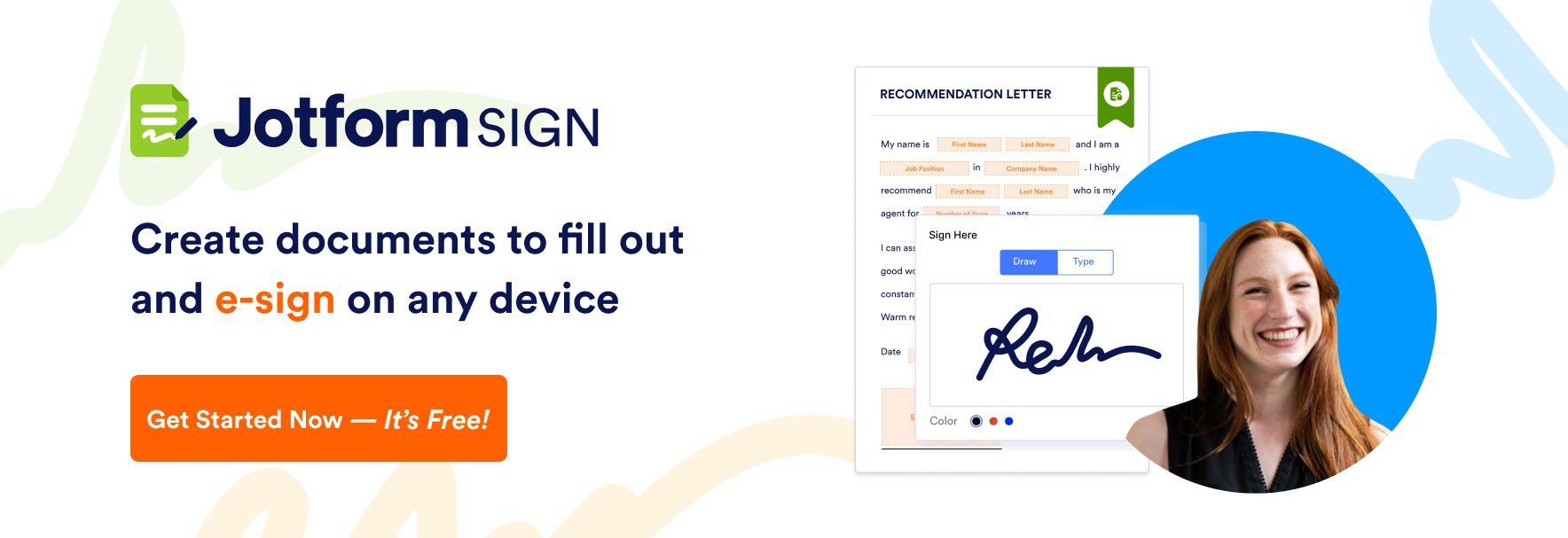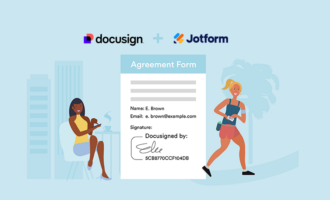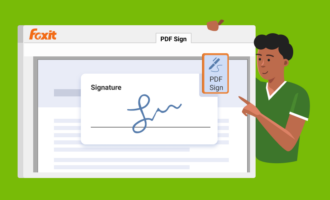“In the fabric of space and in the nature of matter, as in a great work of art, there is, written small, the artist’s signature.” — Carl Sagan
Where did signatures come from? Why are these scribbles so highly prized?
Signatures evolved as a way to ensure three things:
- Authenticity. A signature proves the signer’s identity. For example, the signature on the back of a credit card indicates who the owner is.
- Data integrity. A signature is a seal of integrity that indicates the document has not been changed. Tamper-proof paper and indelible ink preserve the integrity of traditional signatures.
- Non-repudiation. A signature prevents a person from denying involvement in an agreement. It provides evidence to a third party, like a judge or jury, that the signer agreed to the transaction. When a customer signs a receipt, for instance, the buyer gives the store proof of the transaction.
A signature is valuable because it’s a type of guarantee. True, written signatures aren’t 100-percent secure, but they’ve held up over millennia.
In that case, is a new type of signature really necessary?
As technology evolves, so must signatures. From the mid-1800s, humans began sending signatures by telegraph. Over a hundred years later, people were able to send signatures by fax. Electronic signatures were an inevitable outgrowth of the internet. Using cryptography and mobile devices, we can now seal a contract anytime, anywhere.
Let’s explore electronic signatures in more detail.
Definitions of e-signature
Ask a crowd to define “electronic signature,” and you’re certain to get a few different responses. There’s plenty of confusion surrounding digital signatures, e-signatures, and related terms.
First, e-signature is an abbreviation of electronic signature. They mean exactly the same thing.
Next, let’s learn the most important definition of an e-signature — the legal definition.
Legal definition
“The term ‘electronic signature’ means an electronic sound, symbol, or process, attached to or logically associated with a contract or other record and executed or adopted by a person with the intent to sign the record.” — Electronic Signatures in Global and National Commerce Act (ESIGN)
Nolo’s Plain-English Law Dictionary defines an electronic signature as “A paperless method of entering into an electronic contract.”
Why is it important to know the legal definition of electronic signature? This is a consideration for a judge to determine the legality of an e-signature. Knowing this definition is helpful if someone questions the legitimacy of your agreement or contract. Rest assured, in most cases, you and your users won’t need to know the legal definition in detail.
User definition
Another definition of e-signature that you should learn is the user definition. Electronic signatures look and act the same way as written signatures. Signing your e-signature has the same consequences as signing your name on paper.
The only practical difference is that you won’t need a pen. Instead of photocopies of the signed documents, you may receive copies by email.
This simplicity is one key advantage of e-signatures. They are faster to complete, so turnaround times drop. Faster turnaround leads to lower costs, more efficient document management, and higher security.
“Digital signature” definition
Isn’t a digital signature the same as an electronic signature? Not quite. Digital signatures, also known as digital certificates, are the cryptography behind an electronic signature. Their purpose is to verify the signer’s identity and the authenticity of a document.
Different types of digital signatures work with different methods of encryption and identification. Authorities maintain encryption systems and issue certificates to ensure integrity and security.
An electronic signature is the surface representation of complex technology. It’s like a website: The web page you’re looking at is a representation of HTML, CSS, and other technology.
If you’re a business or casual user, legal and technical definitions might be handy, but knowing them may not be your concern when you want to electronically sign a document. Many providers have developed easy-to-use guides for novices. These companies know they need to make electronic signatures user-friendly to gain more users.
Send my document for signature
File type is not allowed.
Maximum file size limit exceeded. (5MB)
Something went wrong.
Signatures have come a long way from quill and ink. How on earth did we get here? How has the signature changed so much? What do these changes mean for the future?
Historical progress of electronic signatures
To know the future of the signature, we can only peer into its history and take an educated guess. Here are a few key events:
- 3500–3100 B.C. The first known writing system uses pictures and symbols inscribed on a Sumerian clay tablet.
- 1500–1200 B.C. The oldest verified alphabet emerges among the Phoenicians.
- 80 B.C. Roman law prohibits the falsification of land inheritance documents. Modern laws discouraging forgery can be traced to this time.
- 50–55 A.D. Paul and Tertius sign their names to letters of the New Testament.
- 1613 A.D. Shakespeare signs his Last Will and Testament.
- 1776 A.D. John Hancock signs the United States Declaration of Independence.
- 1867 A.D. U.S. courts take up the question of electronic signatures. The courts and government accept signatures sent via telegraph.
- 1980s A.D. Signatures via fax machine emerge. Later, courts around the world deem them legal and binding.
- 2000 A.D. President Clinton signs the ESIGN Act into law using electronic means, as well as pen and ink.
What can we learn from this timeline?
- Humans have always wanted to make their mark. For thousands of years, this meant traditional engraving and writing.
- The electronic transmission of signatures has been around for 150 years. The concept is no longer controversial. Governments are quick to accept new forms of electronic signatures as legal.
Signatures have changed again and again thanks to technology, and technological change shows no signs of slowing. Companies that don’t keep up with the trends in digital technologies will be left behind. What does this mean for business leadership?
Electronic signatures in today’s marketplace
“Our mission is a paperless future.” — Ken Moyle, director of public policy at Electronic Signature and Records Association
With the technology proven and legal status granted, shouldn’t all enterprises now use e-signatures? Not necessarily. Barriers to electronic signature adoption include:
- Organization size
- Availability of resources
- Vendor support
- Government policies
Even after adoption, enterprises face a range of challenges that determine the success of the rollout:
- Convincing the stakeholders, including customers, employees, and partners
- Changing processes, including design challenges and defining specific needs
- Using up all their capacity, particularly in technical knowledge and training
- Sourcing necessary data and documents
Additionally, the tradition of wet signatures can be hard to shake. A large part of the problem is a fear of change and an unwillingness to modernize. Why are companies so afraid to break convention?
Could it be that signatures on a screen are worse for our eyes and comprehension? While it’s a fair question, this idea isn’t founded on reliable research. Studies dating back to the 1980s show that screens are as good as, if not better than, paper for viewing documents. Recent studies show people enjoy reading complex and long-form content on electronic screens.
Does accepting electronic signatures weaken the validity of contracts? Not in most jurisdictions. Where electronic signatures are not accepted, parties may need to sign in person with notaries, witnesses, or other safeguards.
Handwritten signatures can also form part of important symbolic events. For example, presidential orders and international treaties are more than mere documents. Politicians will certainly continue to sign them with pen and paper.
Despite these challenges, the adoption rate of electronic signatures is increasing. Gathering e-signatures is easier, faster, and cheaper than wet signatures. What other things does the electronic signature have going for it?
Why electronic signatures are needed in the first place
“Several technological and political forces have converged, and that has produced a global, Web-enabled playing field that allows for multiple forms of collaboration on research and works in real time, without regard to geography, distance or, in the near future, even language.” — Thomas Friedman, The World Is Flat
Electronic signatures are now interwoven into our globalized world. They’re often more secure and take less time than exchanging traditional signatures. They save time, money, and resources.
Global commerce. The value of global e-commerce increased to $25 trillion in 2015, up from $16 trillion in 2013. The world is on the cusp of an improved digital economy that will have transformational impacts. Electronic signatures provide new opportunities in the global economy.
Though a small innovation, e-signatures can have a relatively big effect. Large enterprises “have lots of processes that need to get automated, taken out of paper, taken out of email, and made more efficient,” says Nintex CEO Eric Johnson. Faster processes mean happier customers, and more efficient processes result in more time allocated to security, reliability, and repeatability.
Cyber security. The average business faces hundreds of cyber attacks each year. Of those, it may thwart 70–90 percent of the attacks. To protect themselves, most companies use encryption and certificate-based digital identification systems. These come from dedicated certificate authorities (CA) or trust service providers (TSP).
CAs and TSPs provide the digital signatures behind electronic signatures. When you create an electronic signature, that signature is uniquely linked to your identity. The signature is tied to the document, and everything is encrypted. The encrypted, or digital, signature can later be verified using public key infrastructure (PKI).
Environmental impact. The average office worker throws away thousands of sheets of paper per year. And paper use will persist despite the use of electronic documents. Wet signatures are holding back efforts to cut down on waste and create the ideal “paperless office.”
Congress has been on board for a while. The Government Paperwork Elimination Act (GPEA) was enacted in 1998 and requires federal agencies to use electronic forms, filing, and signatures.
Time savings. Do you need to fill out a form by 5 o’clock? In the past, forms involved typing, printing, signing, scanning, and emailing. Now, you can email a PDF or Word document with an e-signature. Your recipient can use a mobile device to fill out and return the form quickly.
Adopting e-signatures across your organization might seem like a minor decision. However, it creates major efficiencies in time and money.
If you’re still not sure e-signatures are better than traditional signatures, continue reading to compare them.

Advantages of e-signatures over wet signatures
What are the advantages of e-signatures over wet signatures? How does changing the medium create compelling results?
When Adobe acquired Omniture in 2009, the HR team sent out offer letters the traditional way. They printed 3,600 offer letters and stuffed them into 3,600 FedEx envelopes. Sending out the letters took two conference rooms and two weeks to complete. The fastest response came back in 72 hours, and the entire process took weeks.
In contrast, Adobe made electronic offers when it acquired Neolane. The whole process took one person 90 minutes to complete. All 600 employees signed and returned their offers in less than a day. “We’re saving about a million dollars a year in FedEx costs with offer letters alone,” says Jon Perera, vice president and product manager of Adobe Sign.
Electronic signatures don’t just cut down paperwork for businesses. They also reduce the paper load on individuals. Consider the viewpoint of the elderly, who are overwhelmed by paper mail: A missed gas bill could result in the heat being turned off. A phone bill lost in the shuffle could cut communication needed for emergencies.
While it might sometimes seem easier to use a printer, pen, and copier, wet signatures are costlier in the long term. In effect, electronic signatures have at least 10 distinct advantages over traditional signatures:
- Faster. Electronic signatures are up to 75 percent faster. Consider the time saved in preparing, printing, and mailing paper documents. Plus, electronic solutions provide less room for human error, such as signing in the wrong field.
- Less waste. Impress new hires with your environmental awareness. Many Americans believe that environmental protection should take precedence over economic growth. You use less ink, postage, paper, packaging, electricity, and gas for delivery when you go paperless with e-signatures.
- Lower costs. While the cost of ink and paper might seem small, it can amount to millions of dollars across enterprises. Furthermore, e-signatures reduce the amount of employee wages spent on administrative tasks, like printing and mailing.
- Higher security. Using private keys, you get assurance that the signature on the document matches the person signing. Also, legal compliance is faster when you don’t need to send, file, return, and process paper forms.
In contrast, paper mail increases the risk of identity theft. Bank statements are a favorite target of identity thieves. Insurers and consumer advocates urge people to go paperless to protect against fraud and identity theft. - Mobile friendly. Signing electronically allows your signers to complete paperwork anywhere and anytime. It’s especially useful for remote workers or when a signer can’t get to a web terminal or office.
- Searchable. You can search, audit, and monitor your online documents with ease. Physical documents are more likely to get lost in office clutter.
- Easier to complete. Electronic signatures delight your signees because they’re convenient. Receiving, filling out, and sending back documents only takes a few clicks and a few minutes.
- Time-stamped. Most electronic signature solutions record the exact time and date of the signature. They also include other data, like the signer’s IP address.
- Legal. While laws on electronic signatures vary, e-signatures are generally considered legally valid. In the eyes of a judge, they are the same as wet signatures for most situations.
- Modern. A signature could be one of the first introductions a professional receives to your company. First impressions count. An electronic signature will indicate your company is sophisticated and high tech.
Electronic signatures have wide-ranging benefits. As e-signatures become part of your workflow, they can have extra, unexpected benefits:
- You could forge customer relationships with tech-savvy younger audiences.
- You could pay bills faster.
- Sales cycles could speed up.
- Managers might be able to pull insights by tracking progress on a dashboard.
- Customer service reps might have less work because customers have access to documents in real time.
As electronic signatures become more common, it’s important that your online form builder supports several e-signature technologies. Jotform’s e-signature widgets make life easier for business owners and individuals. Additionally, Jotform’s signature product, Jotform Sign, allows you to collect E-Sign- and UETA-compliant signatures quickly with the click of a button. Our audit trail and automated workflow features makes collecting signatures easy and secure. Try Jotform Sign today.

AS ALWAYS, CONSULT AN ATTORNEY BEFORE RELYING ON ANY FORM CONTRACT OR CONTRACT TEMPLATE. THE CONTENT ABOVE IS FOR INFORMATIONAL PURPOSES ONLY.












































Send Comment:
4 Comments:
More than a year ago
Thanks for the nice post. It was very useful for me.
More than a year ago
This blog is very useful for me thanks. also check Online Digital Signature Certificate
More than a year ago
How to sign pdf file with Digital signature pfx file
More than a year ago
hey your blog design is very good. i like it, it is nice and cute. and your article is very usefull and clearly explained. keep it up and keep sharing with everyone. stiply.nl